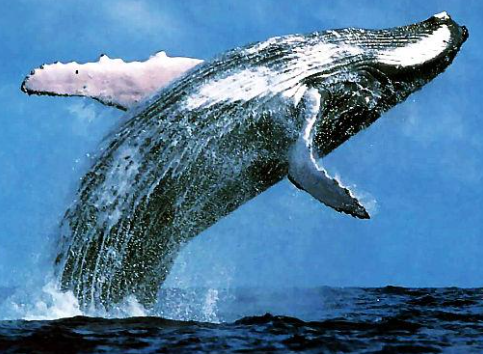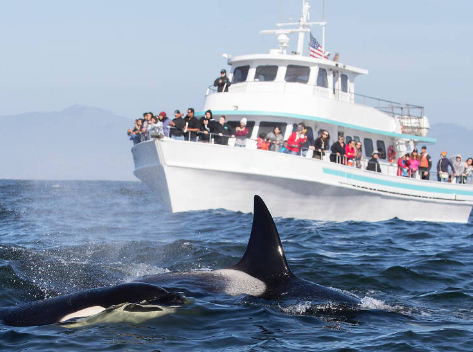Whale watching, while not an instant gratification like technology, it can help with health and mental management. This activity promotes stimulus for the brain as a calming agent. The noise coming from the ocean waves allows for tranquil emotions. What can be produced is endorphins, which can release tension in the body.
The responsibility of whale watching comes down to the human activity that impacts whales. There are two categories: short term behavioral impacts and long term impacts. Some short term behavioral effects include: spending less time hunting or foraging, avoiding vessels (noise pollution), and spending less time resting or socializing.
Some long term effects include: effects on health and reproductive success and pattern shifts from tourism. The rules set for healthy whale watching is to watch from land instead of a boat due to the effects of the boats on the ocean and the creatures.

This brings up dolphinariums and shows that are bad for the whales at Sea World, for example, which has tanks that are too small to fit the whales and puts them in poor conditions. The conservation from whale watching could be recognizing patterns (improves memory), provides a research platform for scientists to study and track the patterns, and can help alert aid for injured sea life.
From the economic stand point, it stimulates the economy as it provides income to coastal communities, develops infrastructure for the local tourism, and offers a long term tourist attraction activity. Universally, this activity makes $2.1 billion per year with over 13 million people going a year in over 120 countries.
This activity can be found right in Boston Harbor, on a New England Aquarium cruise ship tour. There is another in Cape Cod, which show most of the same whales because of being on the East Coast. The East Coast is famous for the Humpback whales that are experiencing a population decrease due to the boats changing patterns, showing why you should watch from the shore.

With New England’s marine mammal population dying slowly due to human interference, the Biden Administration is working on a plan to create wind turbines on off shore space. The plan is to set 2.3 million homes up with wind power. The issue is that the space now potentially be taken up is the space that may be a route for whales and they have not detached the idea of the whales dying not to the interference of alternative power.
This is why you have to see the whales and help track now to prevent things like this. Plus, the experience is once in a life time to add to the health benefits and moral obligation. Some of the most famous spots to whale watch are: Baja California, Maui, Virginia Beach, Newburyport, Vancouver Island, Sri Lanka, Hawaii, South Africa, Juneau, Iceland, and Norway.
The most common found whales over the world are the Minke Whales, which are most commonly mistaken for blue whales. The species comes in different sizes and are a type of gray whale. Though, they are a type of gray whale, they are actually colored based on geographic location. There are the Northern Hemisphere Minke, Dwarf Minke, and Arctic Minke whales that are spread in those different areas from warm to cold temperatures of water.
Based on everything above I hope you consider whale watching for your next activity. Would you go whale watching?
















































Sarah Ross • May 18, 2024 at 12:21 am
Absolutely I would go whale watching. But from shore. They should stop whale watching tours. Don’t they want to save the whales as much as possible? The tour boat’s are just as bad.